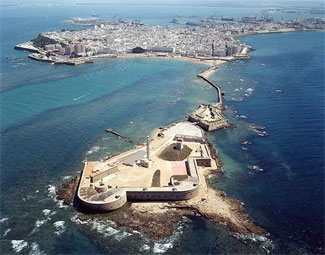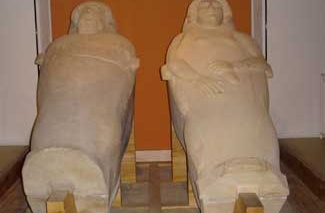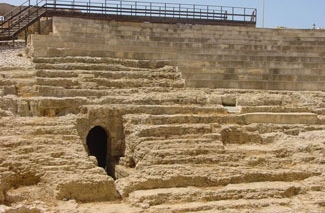History
C lassical authors claimed the city was founded by the Phoenicians in 1100 B.C. However, modern historical science places it in the 9th century B.C. when Phoenician traders arrived in the bay.
The city’s geography and the distinctive traits of the culture of its founders would be a permanent feature of its history: GADIR, which means enclosed site, would become the base of the Mediterranean and Atlantic trade routes of the time.
With the decline of Tyre, the Phoenician metropolis on which the city depended, the citizens of Gadir sought the protection of Carthage, the new master of the seas.
Cádiz
From the 5th century B.C., the Carthaginians held sway over Gadir and ensured it played an important role in its network of coastal factories and in the Punic wars between Carthage and Rome.
The outcome of the fighting over control of the Mediterranean area meant that Cadiz escaped from the Carthaginian stranglehold by signing a pact with Rome. Its name was then changed to GADES, the city that would become one of the most important cities of the Roman province of Hispania.
GADES was overrun by the Goths in around the 5th century. That marked the start of a period of decline as the Visigoth peoples had no seafaring tradition.
The Moorish conquest of the Iberian Peninsula from 711 onwards, after the defeat of Don Rodrigo, the Goth king in the Battle of the Guadalete, saw the start of Muslim domination, a period of stagnation for the city as it was a society with its back to the sea. Alfonso X “the Wise”, the Castilian king, conquered Cadiz in 1262 during the Christian Reconquest of the southern peninsula. The city was then once again settled by Christians and the decision was taken to build the first cathedral on the site of the city’s old Arab mosque.
Cadiz was granted its city charter in 1265, and following the death of the Duke of Cadiz, Rodrigo Ponce de León, became part of the Crown of Castile in 1493.
The 16th century saw the renaissance of the city, as its port became the main commercial port for trade with the recently discovered New World. In 1717, the city’s trading position with the New World was strengthened when the Casa de Contratación or House of Trade was moved from Seville to Cadiz, mainly due to the problems that shipping faced in the River Guadalquivir and the better trading terms that foreigners found in Cadiz.
That economic boom in the 18th century would shape the urban development of the city, which still can be seen today, and produced a cultured, practical and commercial bourgeoisie, open to free trade in the economic arena and a constitutional monarchy in the world of politics.
In this conducive climate, Cadiz welcomed the politicians who took refuge in the city, which was besieged by Napoleon’s troops that had overrun Spain. Those politicians constituted the legislative assembly or Cortes Generales and drafted the first Spanish Constitution, La Pepa, in 1812.
The city’s history in the 20th century was noted for the rise of shipbuilding, during the 1960s and 1970s. Cadiz became highly dependent on its shipyards, a situation that would abruptly change with the oil crisis and the shifts in the world shipbuilding market.
The city is now clearly focused on developing tourism, port activity and the service sector in general.







